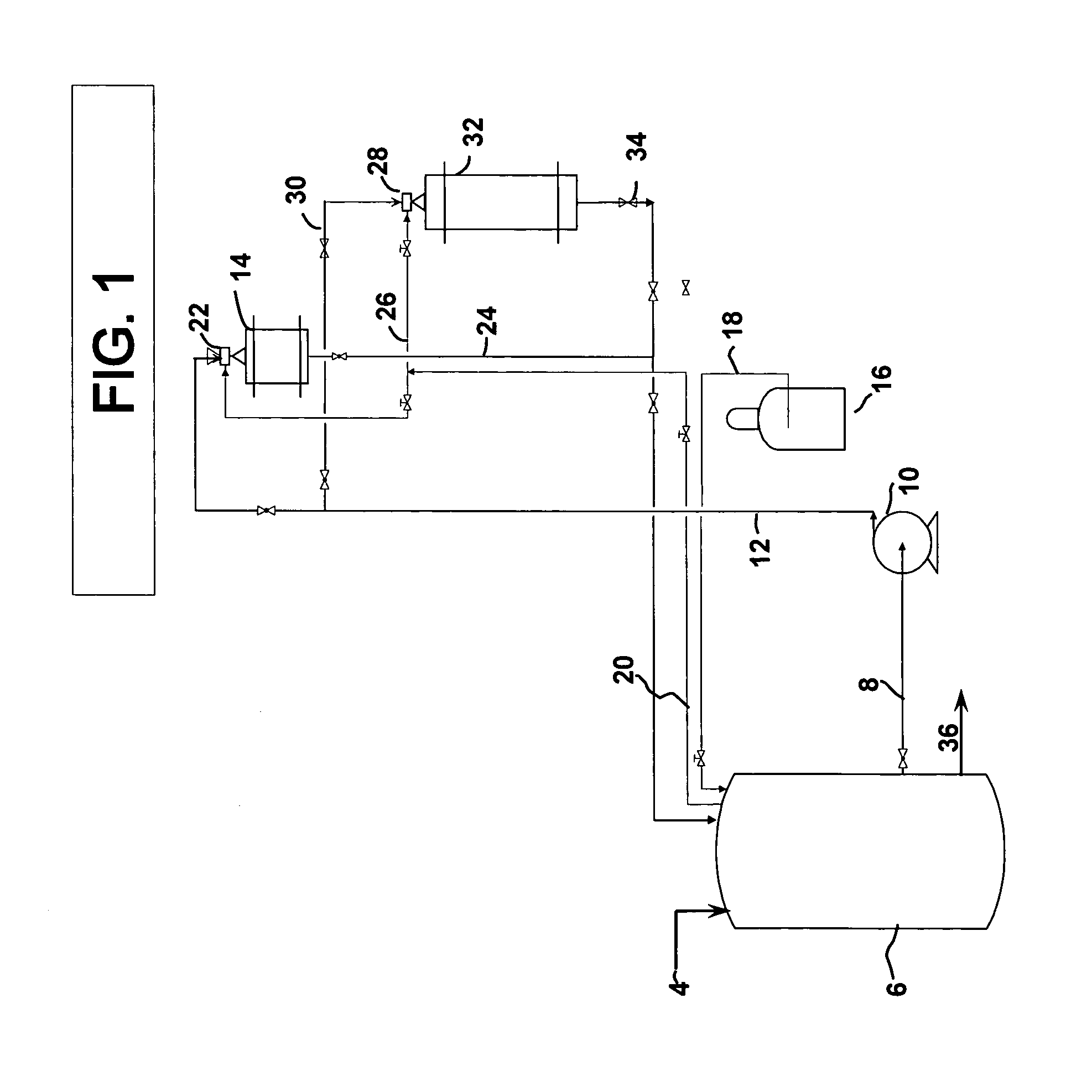Hydrogenation of methylenedianiline
a technology of methylenedianiline and methylenedianiline, which is applied in the field of methylenedianiline hydrolysis, can solve the problems of slurry catalysts that are often plugged, add significantly to the production cycle time and manufacture cost, and achieve the effect of rich in primary amine functionality
- Summary
- Abstract
- Description
- Claims
- Application Information
AI Technical Summary
Benefits of technology
Problems solved by technology
Method used
Image
Examples
example 1
Two-Step Hydrogenation of Methylenedianiline (MDA) to Bis (Para-Aminocyclohexylmethane) (PACM)
[0041]The purpose of this example is to determine whether a ruthenium pretreatment using a ruthenium coated monolith catalyst would be effective to destroy catalyst poisons and then effective to permit ring hydrogenation using a rhodium impregnated monolith catalyst.
[0042]A two-step reaction in which the MDA feed was first pretreated over a 5% ruthenium monolith catalyst having a lithium aluminate wash coat at 20% add-on and then hydrogenated over rhodium and ruthenium bi-metallic monolith catalyst weight ratio of rhodium to ruthenium 8:1 treated with a lithium aluminate wash coat per the flow scheme described in FIG. 1. Hydrogenation was continued until the consumption of hydrogen required to hydrogenate 5–10% of the crude methylenedianiline feedstock. Then, the pretreated methylenedianiline was fully hydrogenated to convert the remaining 95% of the crude reaction product. The results are ...
example 2
Hydrogenation of MDA to PACM Employing Rh / Ru Alumina Coated Monolith Catalyst
[0048]The feasibility of hydrogenating crude MDA to PACM employing a monolith catalyst was demonstrated using a one-step reaction employing a rhodium and ruthenium bi-metallic carried on a monolith substrate with an alumina wash coat. In contrast to the hydrogenation bed in the two-step pretreatment process, Example 1, a higher level of ruthenium is required. The rhodium to ruthenium ration is from 4 to 15 weight parts rhodium per weight part ruthenium. The result of this reaction was then compared to slurry catalyst under same metal loading and reaction conditions.
[0049]The hydrogenation of MDA is carried out by charging the reactor with 1000 g of MDA / THF (50 / 50 or 65 / 35) solution. The reaction mixture is then brought to 180° C., 55 bar hydrogen with stirring. The progress of the reactor is monitored by the rate of hydrogen uptake. The reaction is complete when the rate of hydrogen uptake is less than 1 li...
PUM
| Property | Measurement | Unit |
|---|---|---|
| Temperature | aaaaa | aaaaa |
| Temperature | aaaaa | aaaaa |
| Temperature | aaaaa | aaaaa |
Abstract
Description
Claims
Application Information
 Login to View More
Login to View More - R&D
- Intellectual Property
- Life Sciences
- Materials
- Tech Scout
- Unparalleled Data Quality
- Higher Quality Content
- 60% Fewer Hallucinations
Browse by: Latest US Patents, China's latest patents, Technical Efficacy Thesaurus, Application Domain, Technology Topic, Popular Technical Reports.
© 2025 PatSnap. All rights reserved.Legal|Privacy policy|Modern Slavery Act Transparency Statement|Sitemap|About US| Contact US: help@patsnap.com

